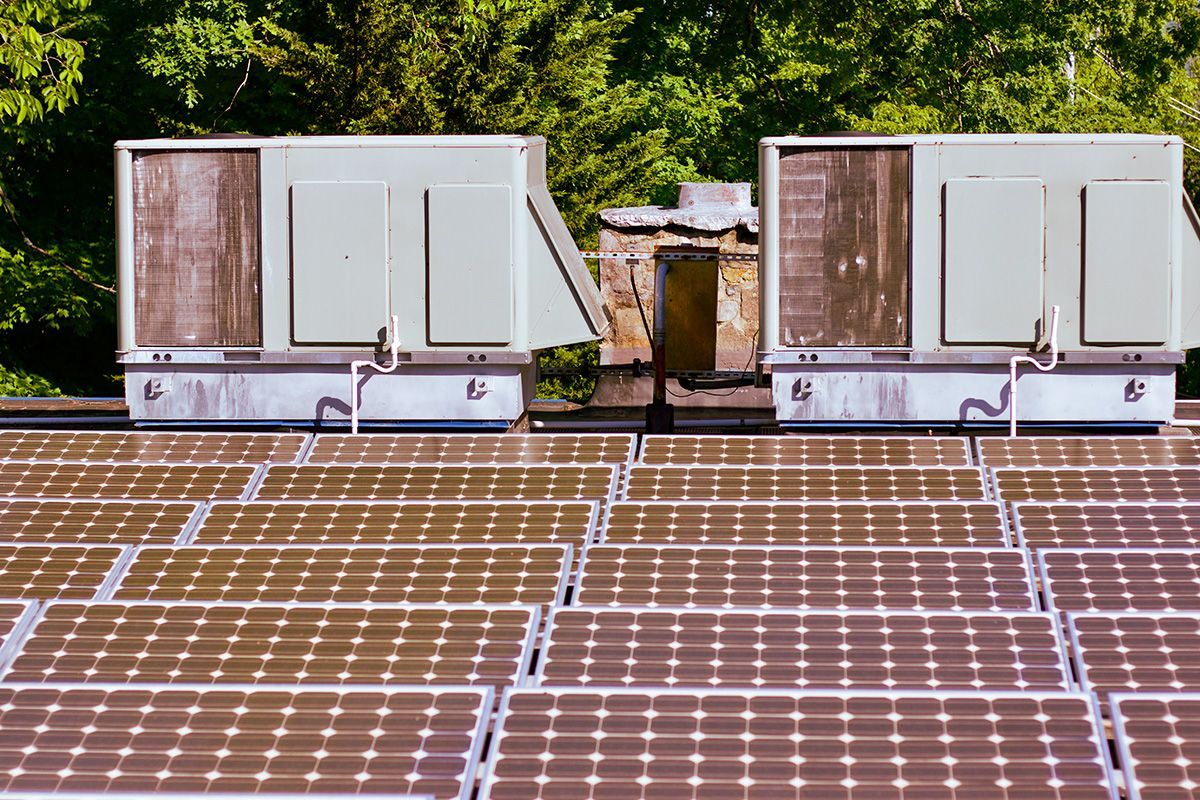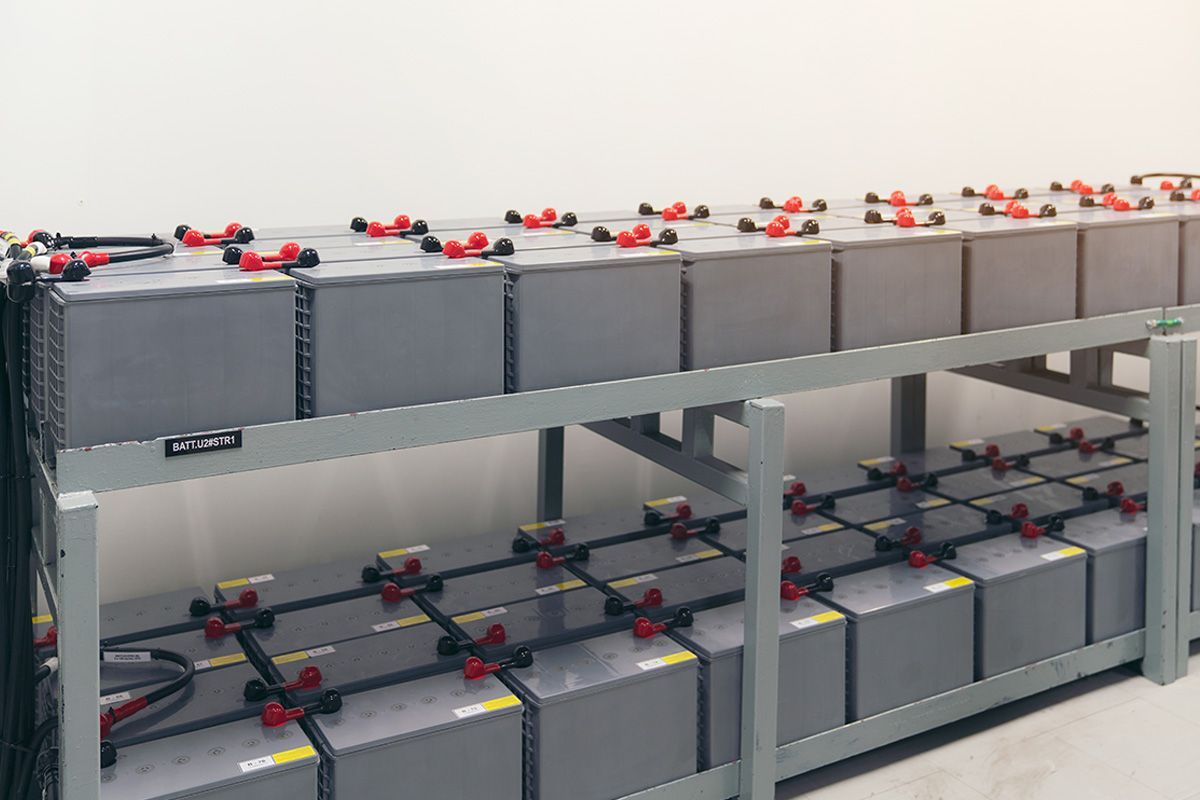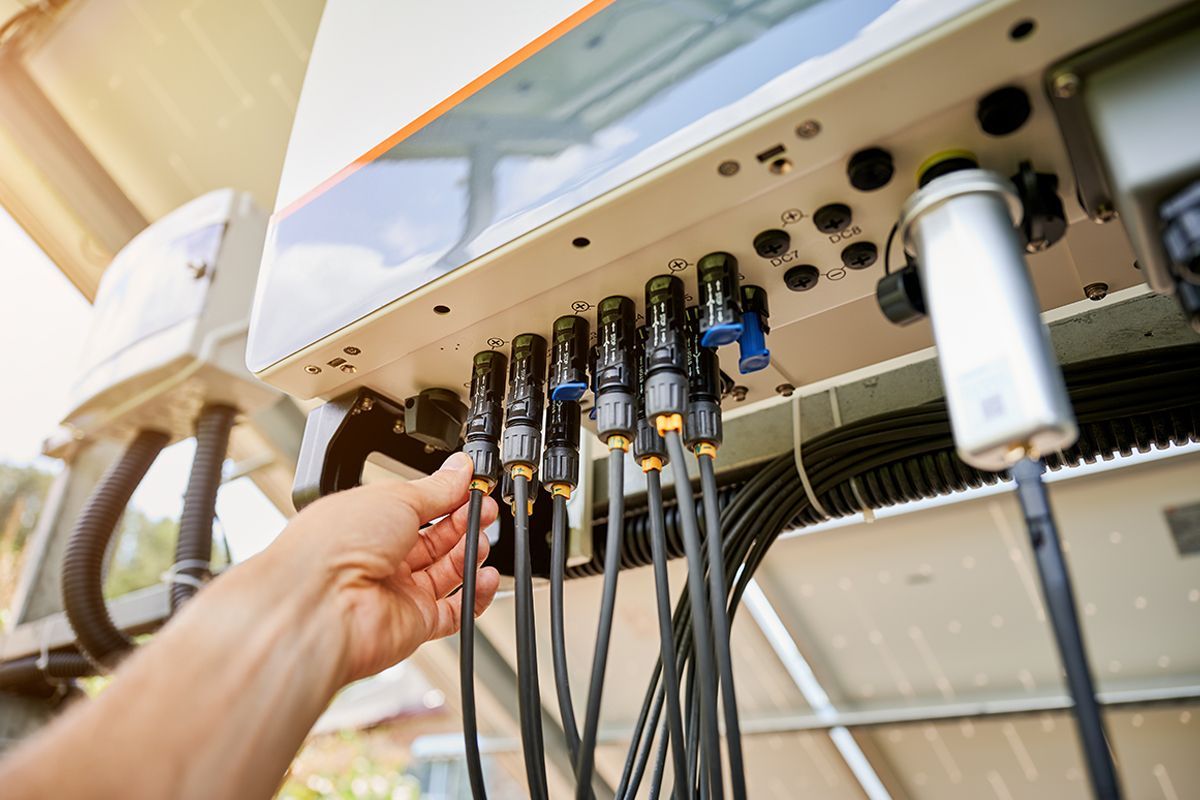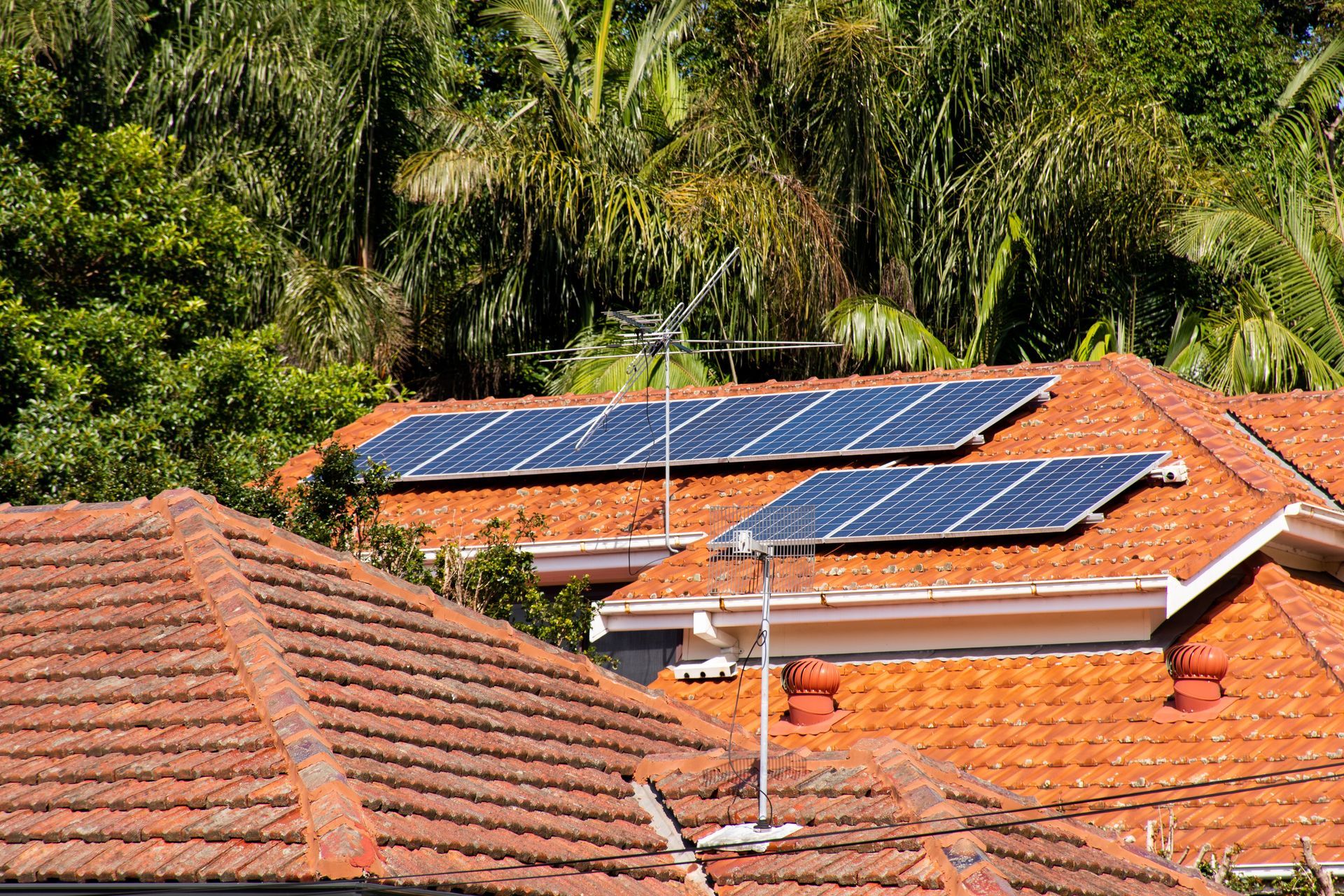Solar Battery Sizing: Everything You Need to Know
Welcome to Solar Sumo, your ultimate resource for all things solar! In this comprehensive guide, we will dive deep into the world of solar batteries. Whether you're a homeowner, business owner, or eco-conscious individual, understanding how to size a solar battery is crucial for maximising the benefits of your renewable energy system.
Why is Solar Battery Sizing Important?
Before we delve into the nitty-gritty details, let's understand why sizing a solar battery is so important. Solar batteries serve as the backbone of off-grid renewable energy systems, providing reliable power when the sun isn't shining. By correctly sizing your solar battery, you can ensure uninterrupted power supply, optimise your energy consumption, and even save money in the long run.
Determining Your Energy Consumption
Determining Your Energy Consumption
The first step in sizing a solar battery is to determine your energy consumption. Knowing how much energy you use on a daily or weekly basis is crucial for accurately sizing your battery bank. Luckily, there are a few simple methods to calculate your energy consumption.
Method 1: Utility Power Bill Analysis
One of the easiest ways to estimate your energy consumption is by analysing your utility power bill. Most utility statements provide the average daily kilowatt-hour (kWh) usage for the billing cycle. Using this information, you can easily calculate your daily average consumption.
For example, if your utility bill shows an average daily consumption of 30 kWh, you would need a solar battery that can provide at least this amount of energy to meet your needs.
Method 2: Appliance Power Calculation
If your utility bill doesn't provide the necessary information, you can estimate your energy consumption by calculating the power requirements of individual appliances and devices in your home. This method requires a bit more effort but provides a more accurate assessment of your energy needs. To calculate the power consumption of an appliance, multiply its wattage (W) by the number of hours it is typically used per day. Repeat this process for all the appliances and devices in your home, and sum up the total energy consumption.
For example, if you have a refrigerator that consumes 150 W and is used for 10 hours a day, its daily energy consumption would be 1500 Wh or 1.5 kWh. Remember to consider both AC and DC loads when calculating your energy consumption. If you're calculating AC loads, account for the efficiency of your inverter to determine the corresponding DC load.
Understanding Days of Autonomy
Days of autonomy refers to the number of days your solar battery can sustain your energy consumption without any power generation. This factor is crucial for off-grid systems or during extended periods of low solar production. To determine the ideal number of days of autonomy for your solar battery, consider the weather conditions in your area and the frequency of power outages. Generally, three to five days of autonomy is recommended for standard battery sizing. It's important to note that days of autonomy directly impact the capacity of your battery bank. The longer you want your battery to sustain your energy consumption, the larger the battery bank you'll need.
Considering Depth of Discharge (DoD)
Depth of discharge, or DoD, refers to the amount of a battery's capacity that can be safely utilised without causing damage or significantly reducing its lifespan. Different battery chemistries have varying DoD recommendations. For lead-acid batteries, a DoD of 50% to 80% is typically recommended, while lithium batteries can safely reach an 80% DoD. Keeping a portion of the battery in reserve helps maintain a consistent charge and extends the overall lifespan of the battery. When sizing your solar battery, it's important to factor in the recommended DoD of the specific battery chemistry you are using. Let's look at an example to better understand how DoD affects battery sizing. Suppose your daily energy consumption is 10 kWh and you are using a lithium battery with an 80% DoD recommendation. In this case, you would need a battery with a capacity of at least 12.5 kWh (10 kWh ÷ 0.8) to ensure sufficient energy storage.
Accounting for Cold Temperatures
In cold winter climates, it's essential to consider the impact of low temperatures on battery performance. Cold temperatures can reduce the efficiency and capacity of batteries, requiring additional sizing considerations. Typically, it is recommended to oversize the battery bank by 10% to 40% to compensate for the effects of cold temperatures. Let's illustrate this with an example. Using our previous example of a 10 kWh daily energy consumption, we can calculate the battery size for cold temperature adjustments. Assuming a 40% adjustment, the calculation would be as follows:
10 kWh * 0.8 (80% DoD) = 12.5 kWh * 1.4 (40% cold temp adjustment) = 17.5 kWh
Therefore, to account for cold temperatures, a battery with a capacity of 17.5 kWh would be necessary.
Voltage Considerations
The voltage of your solar battery system plays a crucial role in its overall performance and compatibility with other components. Choosing the appropriate voltage for your system depends on its size and power requirements. For smaller systems, such as those with a power output of around 400 W, a 12 V battery bank is typically sufficient. However, larger systems, such as a 5 kW system, benefit from a higher voltage wiring system, such as a 48 V configuration. Higher voltages help reduce current flow and minimise energy losses in the wiring.
When sizing your battery bank, ensure that the chosen battery voltage aligns with the voltage requirements of your solar panels, inverters, and other system components.
Connecting Batteries in Series and Parallel
To achieve the desired voltage and capacity for your solar battery system, you may need to connect multiple batteries in series and parallel configurations.
Batteries in Series
Connecting batteries in series involves connecting the positive terminal of one battery to the negative terminal of the next battery. This connection increases the total voltage of the battery bank while keeping the overall capacity constant.
For example, connecting two 12 V batteries in series results in a 24 V system. Similarly, eight 6 V batteries connected in series create a 48 V system.
Batteries in Parallel
Connecting batteries in parallel involves connecting the positive terminals together and the negative terminals together. This configuration increases the overall capacity of the battery bank while maintaining a constant voltage.
For instance, if you have two 12 V batteries with a capacity of 100 Ah each, connecting them in parallel results in a 12 V system with a capacity of 200 Ah. When connecting batteries in series or parallel, ensure that all batteries have the same voltage and capacity to maintain optimal performance and prevent imbalances.
Battery Chemistries and Types
Solar batteries come in various chemistries and types, each with its own unique characteristics and performance attributes. Understanding the different battery options can help you select the best battery for your specific needs.
Lead-Acid Batteries
Lead-acid batteries are one of the most common and affordable options for solar energy storage. They are available in two main types: flooded lead-acid batteries and sealed lead-acid batteries (including gel and absorbed glass mat - AGM batteries).
Flooded lead-acid batteries require regular maintenance and proper ventilation due to the release of hydrogen gas during charging. Sealed lead-acid batteries, on the other hand, are maintenance-free and can be installed in any orientation.
When sizing lead-acid batteries, it's important to account for their lower DoD and overall efficiency compared to other battery chemistries.
Lithium-Ion Batteries
Lithium-ion batteries have gained popularity in recent years due to their high energy density, longer lifespan, and superior cycle performance. They offer higher DoD capabilities, making them more efficient and reliable for solar energy storage.
When sizing lithium-ion batteries, consider their higher upfront cost but longer lifespan and superior performance compared to lead-acid batteries.
Other Battery Types
In addition to lead-acid and lithium-ion batteries, there are other battery types available for solar energy storage, such as nickel-cadmium (Ni-Cd) batteries and flow batteries. These battery chemistries offer unique advantages and disadvantages, and their suitability depends on specific project requirements.
Solar Battery Sizing Reference Table
To simplify the process of selecting the right solar battery size, refer to the following table. Please note that these values are approximate and should be used as a starting point for further calculations and considerations.
| Daily Energy Consumption (kWh) | Battery Capacity) (kWh |
|---|---|
| 5 | 6 |
| 10 | 12.5 |
| 15 | 18.75 |
| 20 | 25 |
| 25 | 31.25 |
| 30 | 37.5 |
| 35 | 43.75 |
| 40 | 50 |
Keep in mind that this table assumes an 80% DoD and does not account for additional factors such as days of autonomy or cold temperature adjustments. Use this table as a starting point and consult with an expert to ensure accurate and optimal sizing for your specific requirements.
Conclusion
Sizing a solar battery is a critical step in designing a reliable and efficient renewable energy system. By understanding your energy consumption, days of autonomy, depth of discharge, and other key factors, you can confidently select the right battery size for your home or business.
At Solar Sumo, we specialise in providing tailored solar solutions for residential and commercial applications. Whether you're looking for solar panels, solar batteries, or a complete solar energy system, our team of experts is here to help you every step of the way.
Embrace the power of solar and join the renewable energy revolution today!










